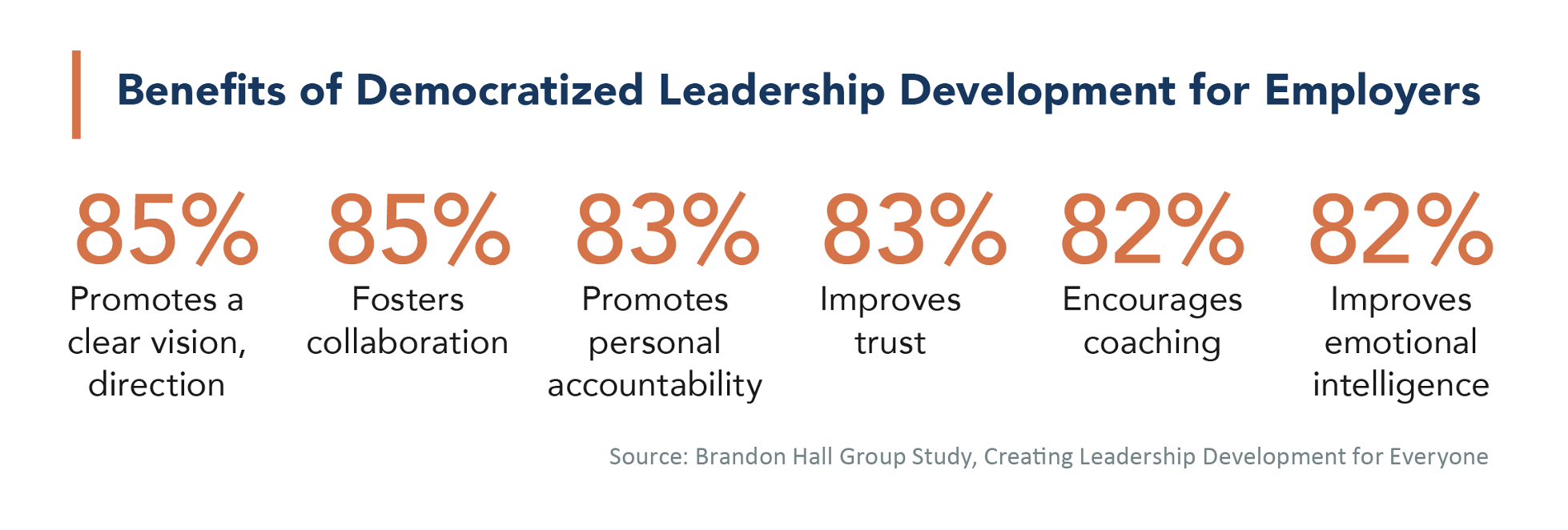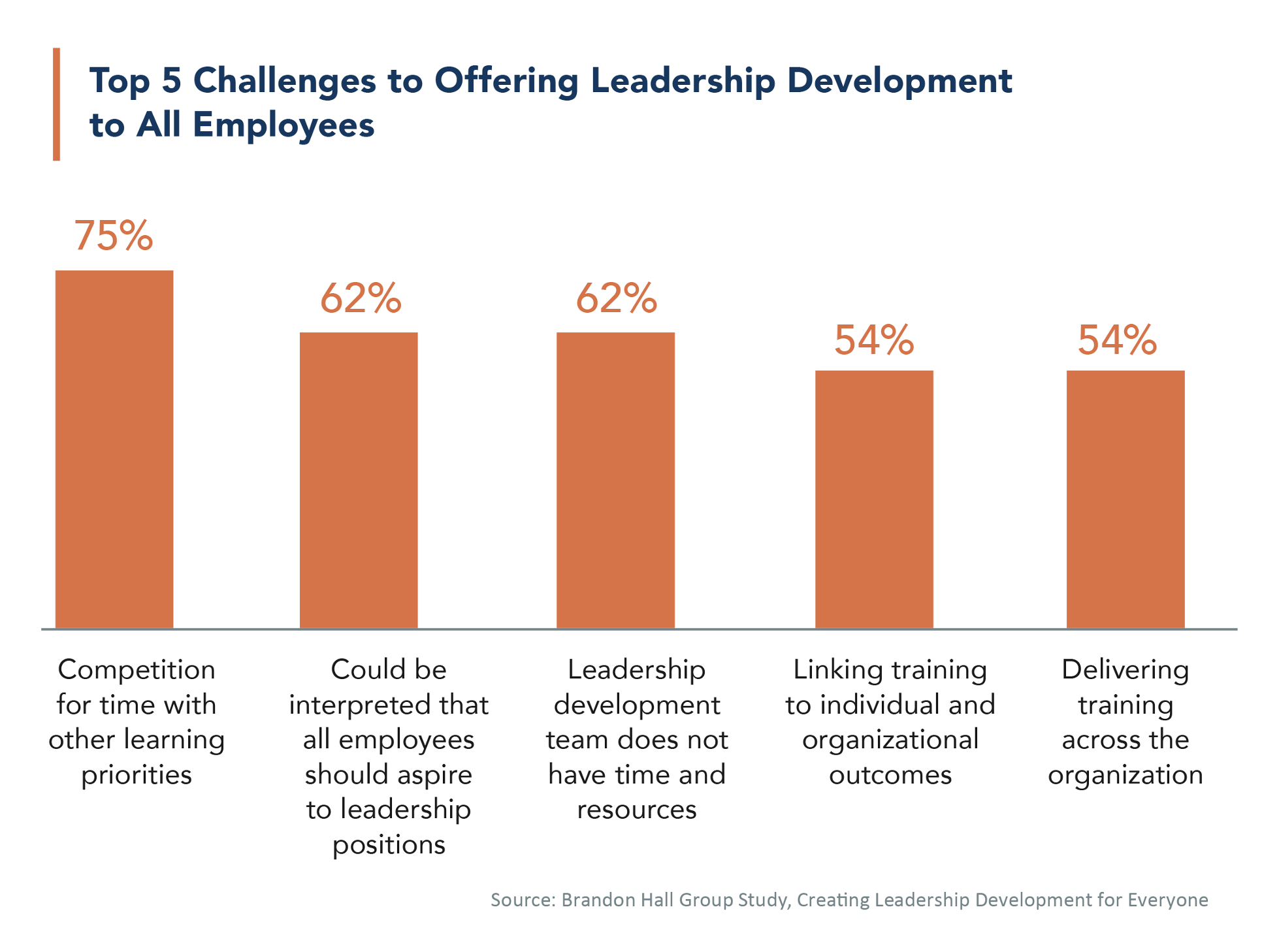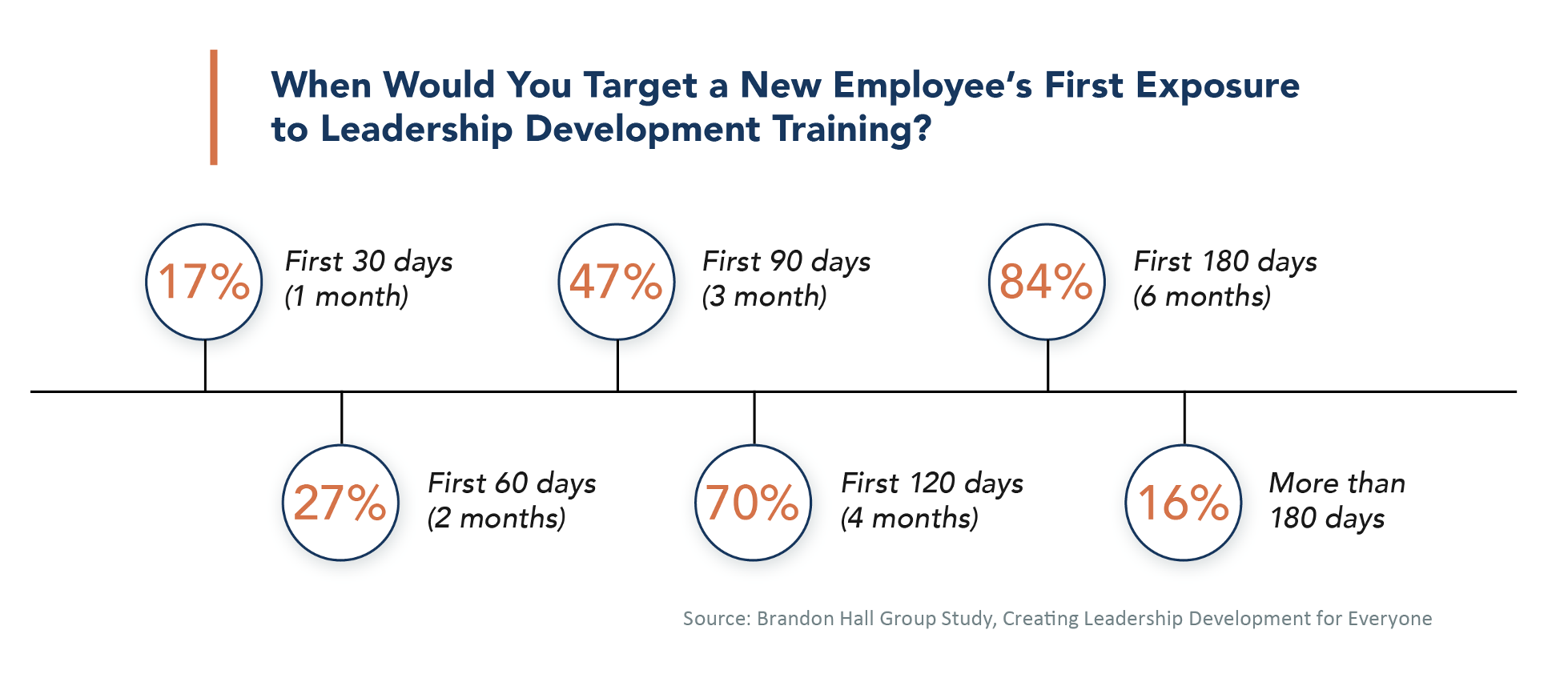
About seven out of 10 organizations believe leadership development training is needed for every employee, according to Brandon Hall Group’s study, Creating Leadership Development for Everyone. And 58 percent of organizations are working to build a culture of continuous leader learning.
The current trend, which evolved over the past few years, is to democratize leadership development as much as possible.
“Leadership development training is needed for every employee”
69 percent
Source: Brandon Hall Group Study, Creating Leadership Development for Everyone
Complexities
More than 80 percent of organizations surveyed said democratizing leadership development has the following significant benefits for employees and employers:

However, research respondents said that offering leadership development across an entire enterprise – especially large ones – has challenges and competes with many other learning priorities. In addition, more than 60 percent said fully democratized leadership development could send the wrong message.

Consequences
Despite the interest in offering leadership development to all employees and the acknowledged benefits it provides to employees and employers, only 35 percent of organizations provide some leadership training for every employee now.

The problem with this is that the nature of leadership is changing. Leadership used to be associated with management and top-down authority. But in a hybrid workforce where various types of teams — from traditional work teams to cross-functional teams, project teams, and more — are called upon to drive business results, strong leadership behaviors must be demonstrated more broadly and at all levels.
When Brandon Hall Group asks about the most critical human capital management priorities each year, leadership development ranks at or near the top. More organizations should act on their instincts: that fully democratized leadership development is critical and expand leadership training to all levels of the organization. Clearly, there are some challenges and obstacles, but they are worth addressing and overcoming.
Critical Question
Among the challenges to democratized leadership is a basic one: When should we first expose new employees to leadership principles?
Brandon Hall Group POV
The goal of fully democratized leadership development is to create a cohesive leadership culture transcending all levels and geographies. With everyone operating from the same set of leadership behaviors, a rich, inclusive, collaborative culture can be built.
So the answer to when leadership development is introduced is simple: as early as possible and ideally before a candidate is hired. A separate strategy is needed for existing employees without initial leadership training, which we will address in another article.
In our research, most respondents believe leadership is best introduced within the first four months of employment.

We believe an introduction to the organization’s leadership principles should begin during the hiring and pre-hire assessment process (if there is one), so you can assess a candidate’s alignment with your leadership values. After hire, initial exposure could come as early as the onboarding process.
Leadership development is a journey and requires a continuous development strategy. Initial exposure to leadership principles and values needn’t be extensive or immersive, nor should it be absent. As employees begin their assimilation into the employer’s culture, they need to learn the leadership values and principles for two reasons:
- They understand what the expectations are when they lead – as a manager, a team member, or in whatever capacity they encounter leadership opportunities
- They understand what they should expect from their leaders so they can appreciate and emulate those behaviors when they experience them and know when leaders are not adhering to those leadership values and principles.
When we talk to HR leaders about introducing leadership development to new employees as soon as possible, a common reaction is that there are too many other priorities for them to learn when they start their jobs.
Again, exposure to leadership development does not mean a three-day seminar or completion of an in-depth eLearning curriculum. While that also should come as soon as practical, the concept is to ensure employees know the values upon which the organization stakes its reputation and that they must abide by and align with to be successful.
Most organizations recognize that the best employees fit the organization’s culture. Leadership is an important part of the culture, so why would leadership values and principles not be communicated at the earliest possible time?
Doing that early provides a strong foundation to start employment. The practical application of leadership principles as part of a continuous journey can come later. But start employees’ tenure on the right foot by helping them understand your leadership values and principles so they know what the organization stands for and expects from all employees; those who lead now and those who may lead in the future.



